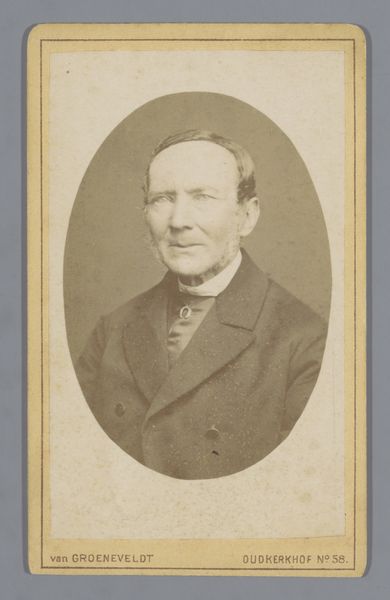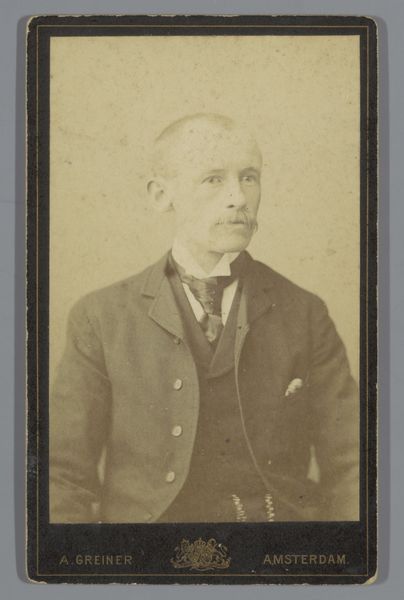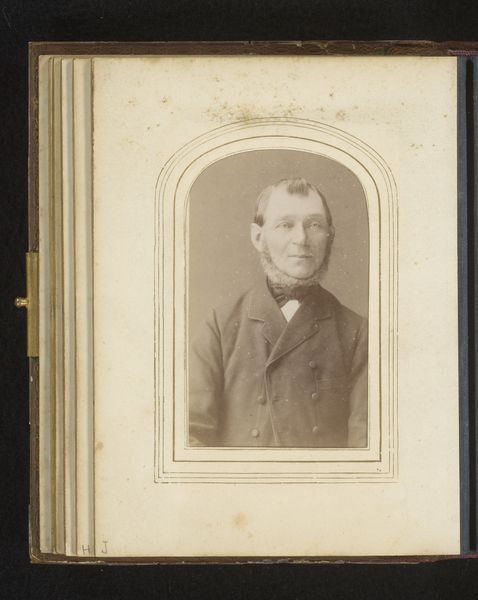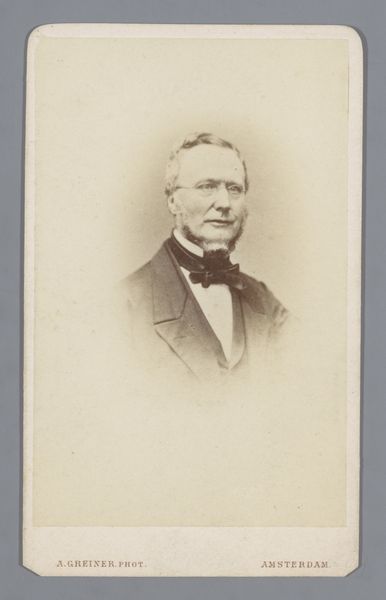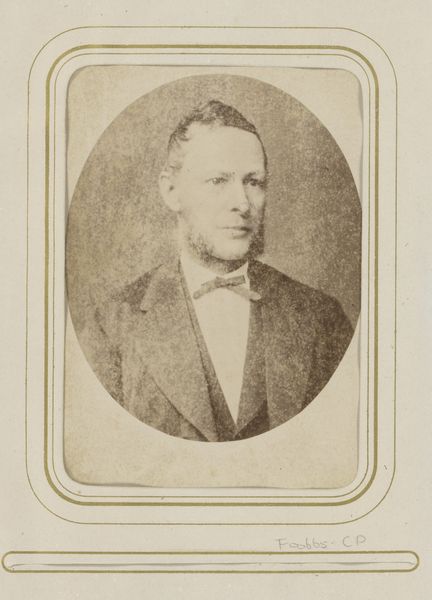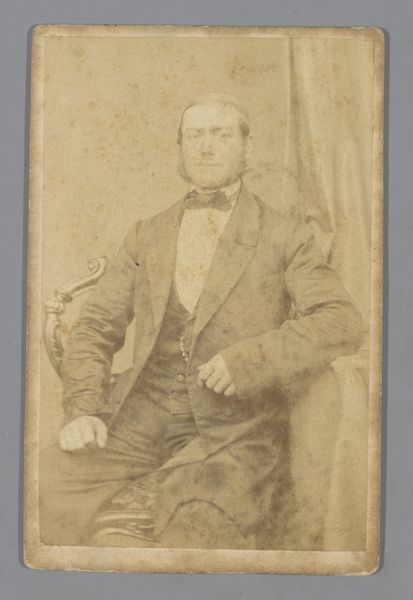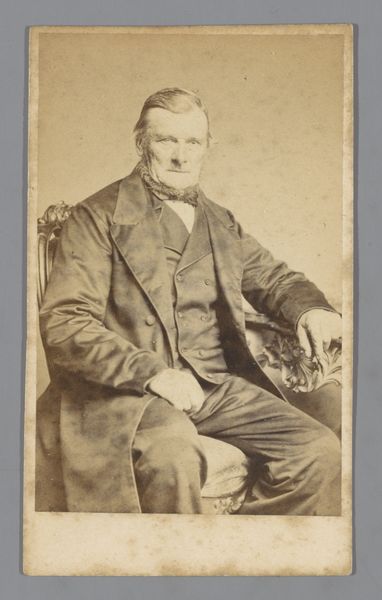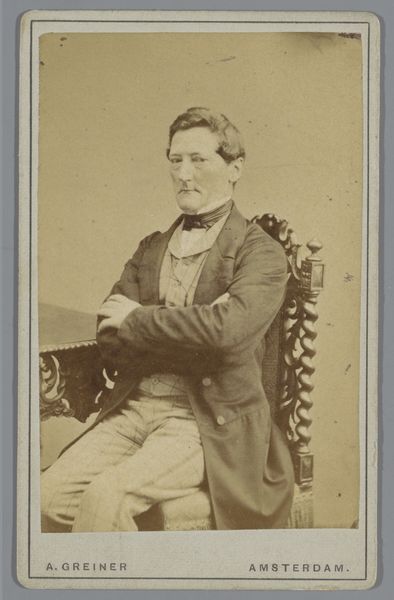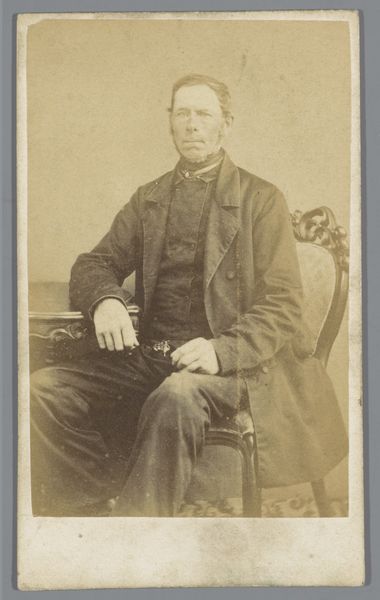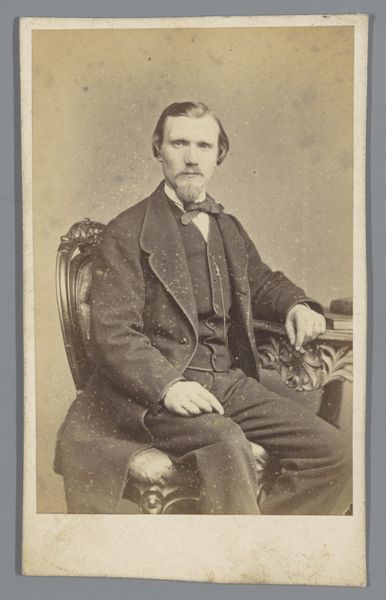
photography
#
portrait
#
photography
#
paper medium
#
realism
Dimensions: height 97 mm, width 59 mm
Copyright: Rijks Museum: Open Domain
Curator: This photographic portrait, dating to somewhere between 1860 and 1892, presents a seated, unidentified man. What's your first impression? Editor: Austerity. The limited tonal range really underscores a certain starkness in his demeanor, doesn’t it? The subdued sepia flattens out, almost mirroring a quiet life. Curator: I think that mood speaks to the evolving role of photography. Initially seen as a tool for documentation among the emerging middle classes, the realism is intended to express the individuality and importance of the subject. A powerful symbol of self-possession. Editor: Self-possession, maybe. I can see that. Note how the composition focuses intently on his hands clasped around a walking stick—it creates a very rigid triangle between his elbows and hands, almost like he's creating an artifice to avoid being revealing, or emotionally accessible. Curator: You make an excellent point, and the stiffness is, in part, technological. In the early days of photography, sitters were physically restrained and kept in static poses during long exposures. Editor: Yes, I was just about to say that the realism movement demanded an exactness—look how meticulously all the buttons on the jacket are captured. Incredibly detailed given the technology, in the sense that every dot, button, and facial imperfection becomes essential, lending the subject both strength and gravitas. Curator: The clothing definitely reflects societal conventions of the time. This gentleman has both class and money in wearing such elegant accessories like a suit jacket and tie-bow. But while his features lack perfect symmetry or traditional handsomeness, photography empowers him with its capacity for truthful representation. In a way it gives agency in how they are portrayed within societal norms of wealth and authority. Editor: Agency, within a limited field perhaps! As it lacks depth, I wonder if we read too much in detail and context of this medium. And although muted sepia seems initially depressing, the man becomes a powerful formal image! The contrast heightens—it is surprisingly dramatic given that photography from this period may not always contain a grand narrative beyond mere imitation. Curator: I completely agree; seeing through that formal composition highlights photography's complex, and evolving, role during the rise of bourgeois portraiture. Editor: Well, that's made me reconsider my first, perhaps too harsh, impression. Thanks to your insights on photography during that period!
Comments
No comments
Be the first to comment and join the conversation on the ultimate creative platform.
